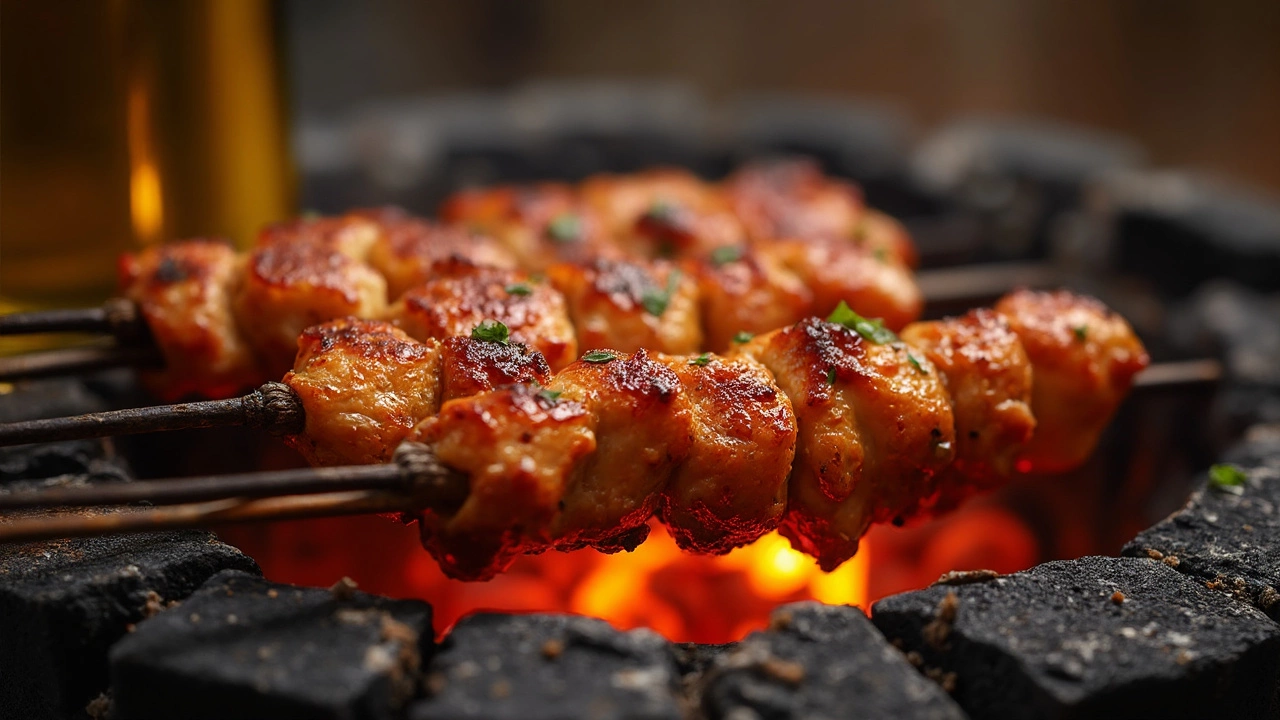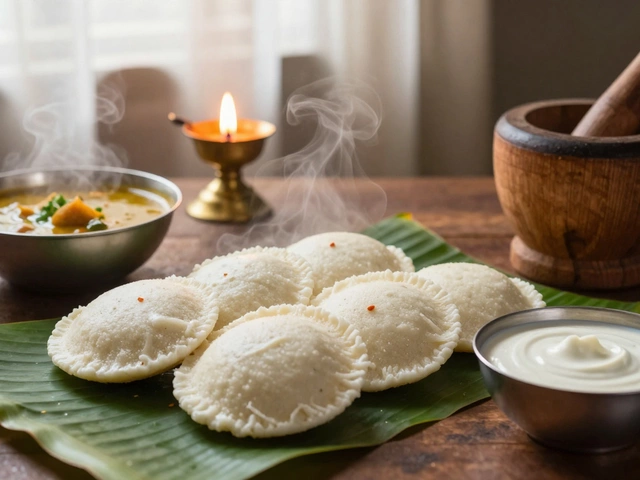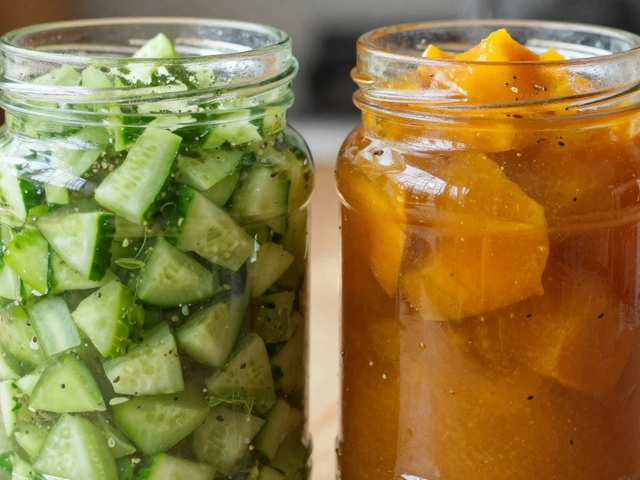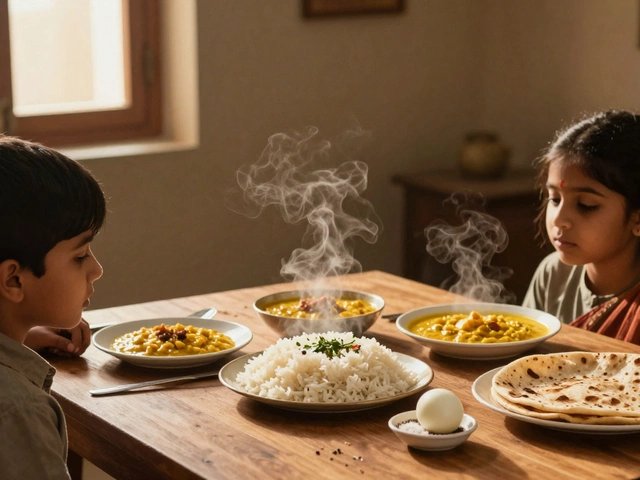If your tandoori chicken isn't turning out like your favorite restaurant’s, your oil might be to blame. The type of oil you use affects both flavor and how well your marinade sticks to the chicken. Mess this up, and you wonder why it tastes off, greasy, or just plain blah.
Right from the start—avoid oils with strong flavors like olive oil or coconut if you want that classic smoky vibe. These oils take over the spice mix and mess with those charred, spicy notes we all love. You want an oil that handles high heat without adding weird aftertastes or burning before the chicken cooks through. Ready to see what to grab from your kitchen shelf and what to skip? Let’s settle this once and for all.
- Why Oil Choice Matters for Tandoori Chicken
- Best Oils to Use: Pros and Cons
- Oils to Avoid: What Goes Wrong
- Traditional vs. Modern Oils
- Cooking Tips for Flavor and Health
- Frequently Asked Questions
Why Oil Choice Matters for Tandoori Chicken
The oil you pick for tandoori chicken isn’t just a small ingredient—it’s the backbone for both taste and texture. Oils with a high smoke point handle the intense heat of a grill or tandoor without burning. When oil burns, it gets bitter and might even push unhealthy stuff into your food. You want to avoid that mess.
The right cooking oil for tandoori chicken also helps your marinade coat the meat evenly and lock in flavors. A good oil pulls all those spices—like cumin, chili, and garam masala—deep into the chicken, rather than leaving them stuck to the bowl. Plus, oil stops the chicken from drying out, so it stays juicy inside with that signature char on the outside.
- Neutral oils (like canola or sunflower) don’t overpower spices, so you taste the marinade, not the oil.
- High smoke point oils (think avocado oil or peanut oil) can handle grilling without breaking down or smoking out your kitchen.
- Skipping the right oil makes for bland, unevenly cooked, or chewy meat.
One study from the Indian Institute of Food Processing Technology found that tandoori chicken cooked with high smoke point oils held moisture 23% better and delivered a more even char, compared to chicken cooked with ghee or butter at the same temps. So if you’re after juicy, flavorful chicken every single time, the oil really can make or break your dish.
Best Oils to Use: Pros and Cons
When it comes to best oil for tandoori chicken, you want something that can handle heat, won’t overpower the masala, and keeps things juicy—not soggy. Not all oils check those boxes, so here's what actually works, plus what you need to know about each one.
- Mustard Oil: This is the OG in North Indian tandoori recipes for a reason. It gives a punchy, slightly pungent note that just wakes up the marinade. Seriously authentic. Just make sure to heat it till it smokes before using—raw mustard oil tastes harsh.
- Sunflower Oil: Popular for a reason—it’s neutral, doesn’t mess with your spices, and works even at high temps. Great for people who want the aromatics from their masala and nothing extra.
- Canola Oil: Basically invisible in taste, budget-friendly, and a champ for grilling because of its high smoke point. Your spices get all the attention, no weird flavors pop out, and it keeps the chicken moist.
- Ghee: Want richer, butterier notes? Ghee adds that touch without burning up like regular butter. It clings to spices, boosts flavor, and has a bonus: it’s got a high smoke point. Just know it’ll bump up the calories a bit.
Here’s a quick look at some numbers that matter when picking the tandoori chicken oil for grilling or oven roasting:
| Oil | Smoke Point (°F) | Main Benefit |
|---|---|---|
| Mustard Oil | 480 | Classic, tangy flavor |
| Sunflower Oil | 450 | Neutral, handles high heat |
| Canola Oil | 400 | Cheap, clean tasting |
| Ghee | 485 | Rich, buttery notes |
Thinking about health? Sunflower and canola are lower in saturated fats than ghee, but honestly, you usually use just a few tablespoons in the marinade. If authenticity matters most, mustard oil is your best friend. Want a lighter, healthy option? Sunflower and canola have you covered. For pure flavor, ghee takes the win—just don’t go overboard.
Oils to Avoid: What Goes Wrong
Not all oils play nice with tandoori chicken. In fact, picking the wrong oil can totally ruin your spice mix and even turn your chicken bitter or weirdly greasy.
Some oils just aren’t built for the heat you need for the best tandoori chicken recipe. Here’s what usually goes wrong:
- Extra-virgin olive oil breaks down fast at high temperatures. Instead of getting that mouth-watering char, you’ll get a burnt smell and maybe even a harsh taste. Plus, its flavor totally dominates the chicken. Not what you want here.
- Coconut oil adds a sweet, tropical note. That’s perfect for curries, but for tandoori chicken, it covers up all the smoky, tangy spices you just put effort into mixing.
- Butter and pure ghee both smoke up too quickly on a hot grill or tandoor. This means burned marinade and disappointing flavor before the chicken even cooks through. (A little ghee is okay brushed on just at the end for shine, but don’t use it in the main marinade.)
- Sesame oil, while awesome in Chinese and Korean dishes, overwhelms the classic tandoori spices with its nutty kick. It’s just too much for traditional tandoori flavor.
Why does this matter for health, too? Most of these oils—especially olive oil and coconut oil—have low smoke points. When you heat them past that point (like you do in high-heat tandoori chicken cooking), the oil can break down and release compounds that taste bad and aren’t the best for your body.
| Oil Type | Smoke Point (°F) | Why to Avoid |
|---|---|---|
| Extra-Virgin Olive Oil | 375 | Burns easily, strong flavor |
| Coconut Oil | 350 | Sweet, dominates spices |
| Sesame Oil | 410 | Strong, nutty flavor |
| Butter | 300 | Burns, low smoke point |
If you want your tandoori chicken to shine, reach for oils that have a neutral taste and a high smoke point. Keep reading to see which ones work best for the job.

Traditional vs. Modern Oils
If you ask someone’s grandma in Punjab what oil to use for tandoori chicken, there’s a good chance she’ll pick mustard oil. It’s been the go-to for ages in North Indian kitchens, thanks to its sharp kick and the way it makes those signature spices pop. Mustard oil also holds up well over high heat, which is pretty important since traditional tandoors get super hot.
But not everyone loves the bite of mustard oil. Sometimes it feels a little strong, especially if you’re new to it. That’s where modern oils like sunflower, canola, or rice bran oil come in. These options have almost no flavor and work great if you want the spices and smoky notes to stand out. People like them because they’re widely available and tend to be lighter on the stomach.
- Mustard oil: Classic for the original taste. Adds heat and a deep, earthy flavor that nothing else really gives. Just remember it’s kind of intense, so a little goes a long way.
- Sunflower oil & canola oil: Both are high in smoke point and super neutral in flavor. That means you won’t get weird bitter notes, and your tandoori chicken marinade stays bright and true to the spices.
- Rice bran oil: Gaining fans for being healthy and neutral, plus it handles high temps. Not traditional, but nobody’s complaining about the results!
Some folks experiment with blends—using a splash of mustard oil with a milder oil. You get a hint of traditional edge, but your chicken won’t taste like pure wasabi.
| Oil Type | Smoke Point (°F) | Flavor Impact | Traditional Use |
|---|---|---|---|
| Mustard Oil | 480 | Strong, spicy, earthy | Very common |
| Sunflower Oil | 450 | Neutral | Rare in tradition, popular now |
| Canola Oil | 400 | Very mild | Modern kitchens |
| Rice Bran Oil | 490 | Neutral, slightly nutty | Modern kitchens |
If your only experience with tandoori chicken is at restaurants, they often use sunflower or a similar neutral oil for consistency and cost. But at home, you’re free to mix it up. Try just switching your oil and see how much the flavor changes—it’s almost like magic.
Cooking Tips for Flavor and Health
Getting the flavor and health balance right with tandoori chicken oil makes all the difference. The top trick? Go minimal on the oil. Tandoori chicken is not supposed to swim in fat — it’s meant to be juicy, smoky, and a little charred around the edges. Use just enough oil to help the spices cling and keep the chicken moist. For a normal batch (about 1 kg of chicken), 2-3 tablespoons of oil is plenty.
Reach for oils with a high smoke point, like canola, sunflower, or traditional mustard oil. Mustard oil, especially, is a classic in North Indian recipes. But here’s a trick: if you use mustard oil, heat it up till it just starts to smoke, then cool it before mixing into the marinade. It kills the raw smell and pumps up that signature flavor.
Worried about health? Most neutral oils have about 120 calories per tablespoon. If you want to cut calories but keep things moist, try brushing the chicken with oil only just before grilling instead of mixing it all into the marinade. Here’s a quick glance at oil smoke points and calories for your next tandoori chicken recipe:
| Oil Type | Smoke Point (°F) | Calories per tbsp |
|---|---|---|
| Canola | 400 | 120 |
| Sunflower | 440 | 119 |
| Mustard | 480 | 124 |
| Ghee (Clarified Butter) | 485 | 112 |
If you want that smoky restaurant finish, try this at home: after grilling, place a tiny cup or foil bowl with hot charcoal next to the chicken, add a few drops of ghee, and cover the dish for a few minutes. It adds an epic smoky aroma without more oil.
- Don’t reuse oil left from marinating raw chicken. It’s not safe.
- Choose lean cuts, like chicken breast, if you want to keep fat lower. Drumsticks and thighs stay moister but have a little more fat.
- Always marinate for at least 4 hours, so the oil and spices soak in well.
- Skip butter or cream in the marinade if you’re focused on being health-friendly — stick with yogurt instead for moisture.
Bottom line: The right oil, in the right amount, brings out the best in tandoori chicken while keeping your meal lighter and fresher.
Frequently Asked Questions
What is the best oil for tandoori chicken? Go for a neutral, high smoke point oil. Sunflower oil and canola oil are top picks. They stay stable at high heat (smoke point above 400°F/204°C), don’t overpower your spice mix, and give the best char without burning. Peanut oil is a good option too, as long as no one’s got allergies.
Why not use olive oil for tandoori chicken? Olive oil has a lower smoke point (between 375-410°F) and a strong flavor that changes the classic tandoori taste. When you grill or broil at high temperatures, it can burn and give a bitter aftertaste.
“Traditional Indian tandoori recipes almost always use neutral oils—there’s a reason you never taste olive or coconut in classic tandoori. They mask the spice and ruin the aroma.”
— Chef Ranveer Brar, Indian culinary expert
Is ghee a good choice for tandoori chicken? Ghee totally works and brings a rich buttery note. It’s traditional in a lot of North Indian kitchens. Just make sure there’s no dairy allergy in the crowd. Ghee’s smoke point is high (around 485°F), so it can handle the hot grill easily.
| Oil | Smoke Point (°F) | Flavor Strength |
|---|---|---|
| Sunflower Oil | 440 | Neutral |
| Canola Oil | 400 | Neutral |
| Peanut Oil | 450 | Neutral |
| Ghee | 485 | Rich, Mild |
| Olive Oil | 375-410 | Strong |
| Coconut Oil | 350 | Strong |
Can I skip oil in the marinade? You shouldn’t. Oil helps the marinade stick, keeps chicken juicy, and stops spices from burning. Skipping oil often leads to dry, uneven flavor.
Is there a healthiest oil for tandoori chicken? If health matters most, use oils with less saturated fat like canola or sunflower. But don’t use too little. Even for healthy recipes, a bit of tandoori chicken oil makes a big difference to texture and taste.
How much oil should I use? For about 1 kg (2.2 lbs) of chicken, 2-3 tablespoons of oil is usually enough. Too much, and you’ll get a greasy result. Too little, and the chicken dries out or burns.
What if I’m cooking in an air fryer? Stick with those neutral oils. Even with air fryers, coating the chicken in a bit of best oil for tandoori chicken before cooking gives crisp edges and keeps spices from falling off.





